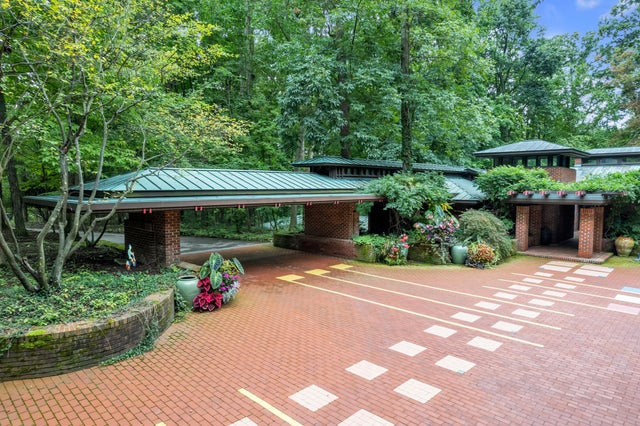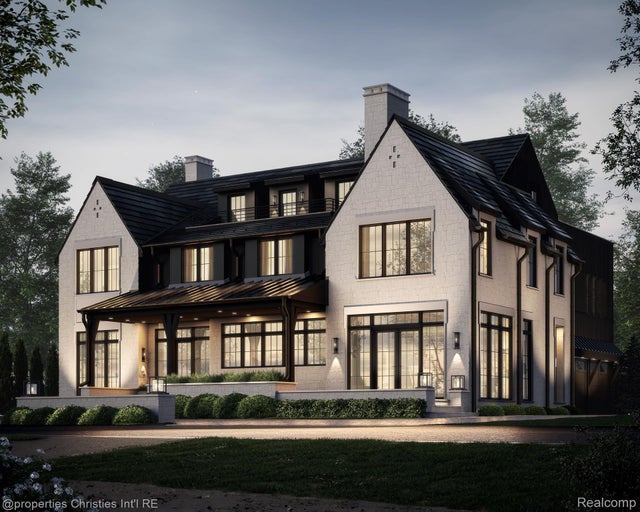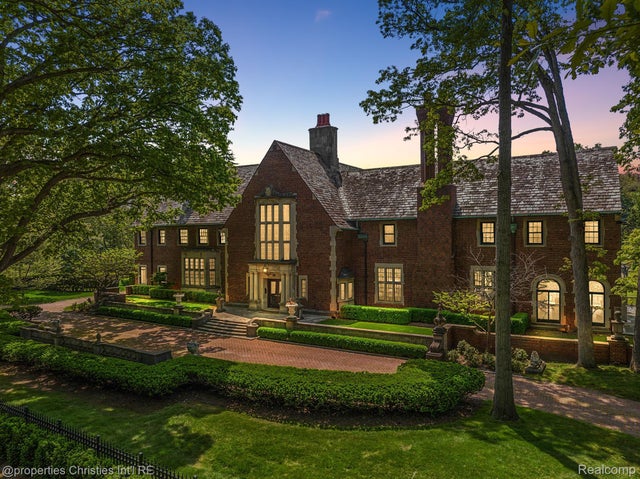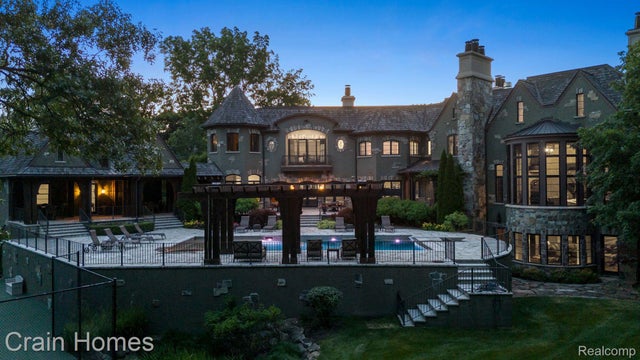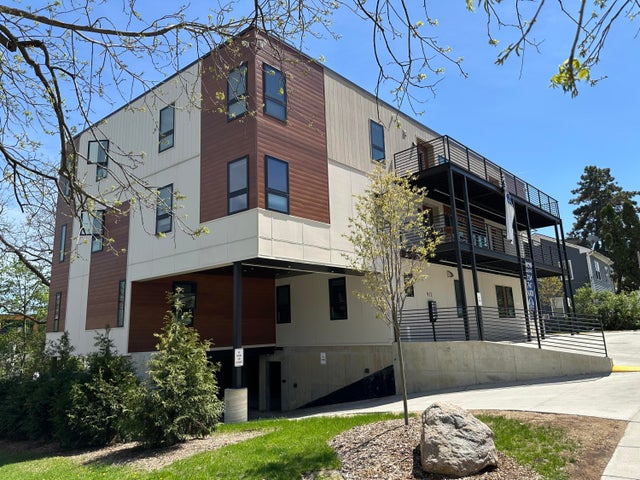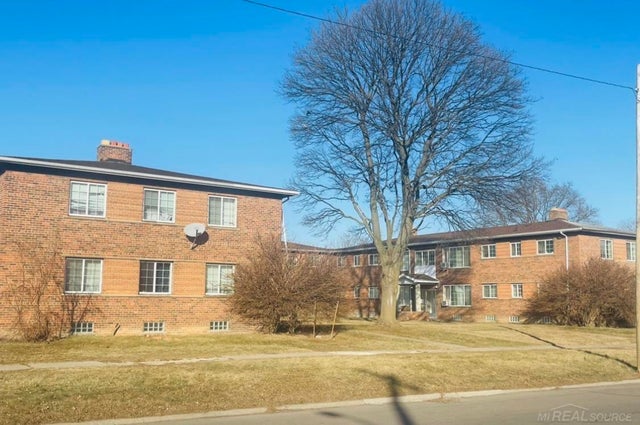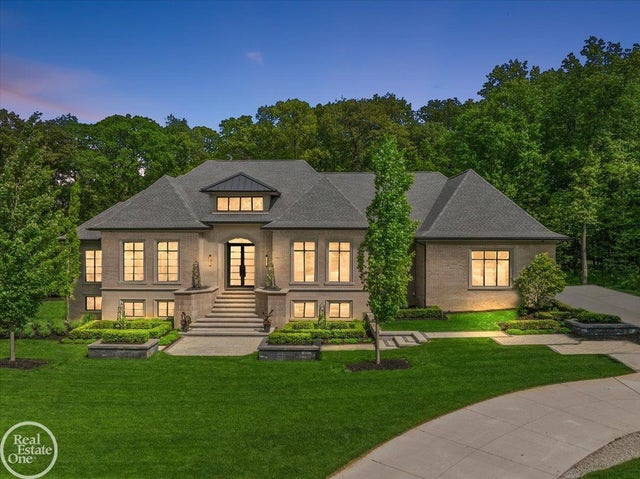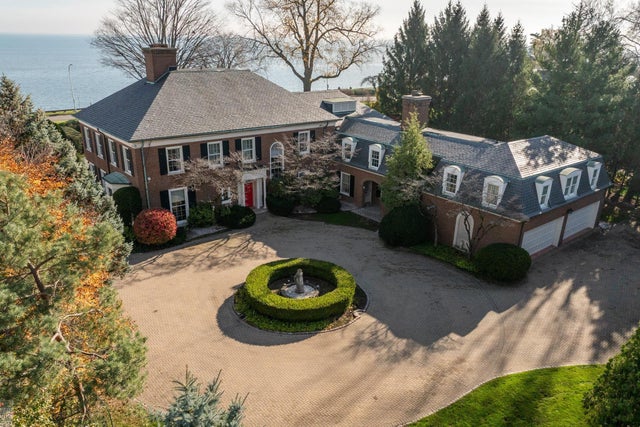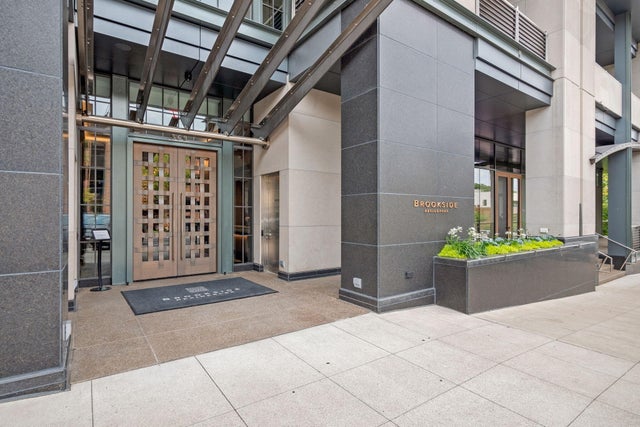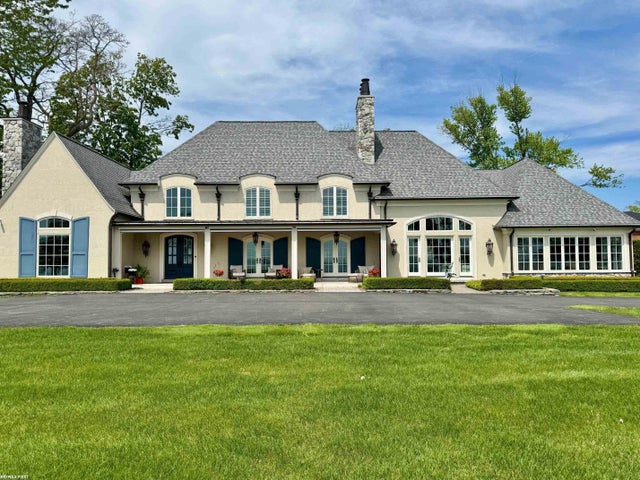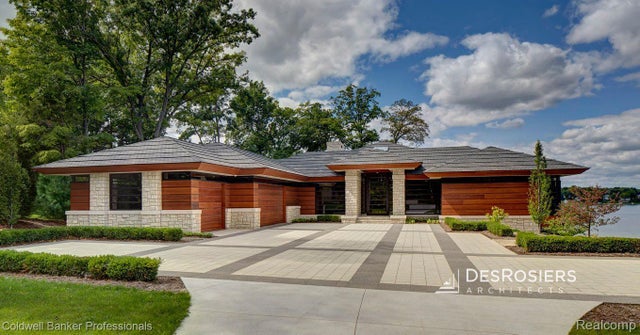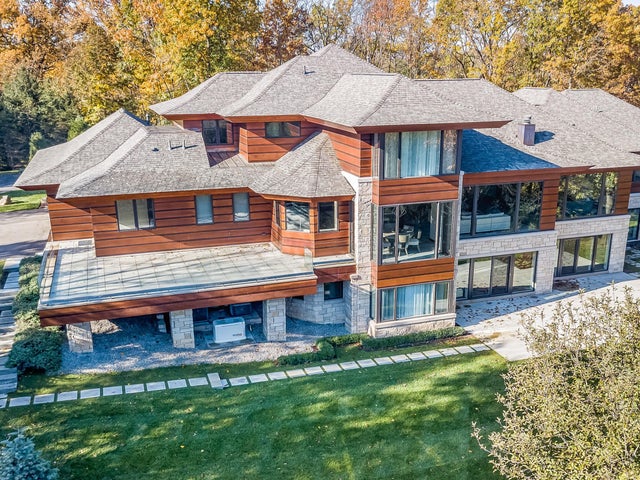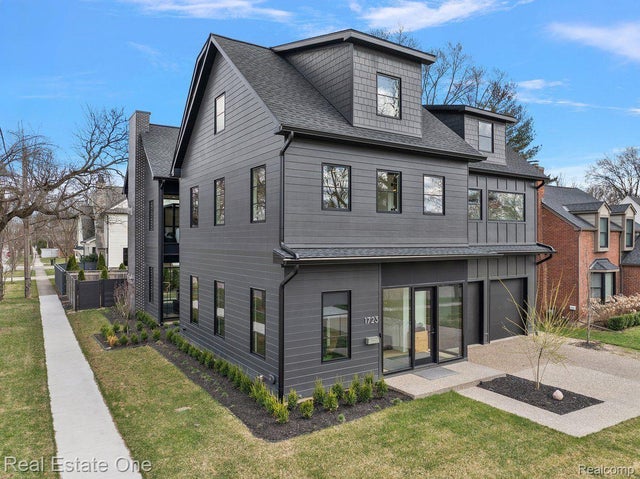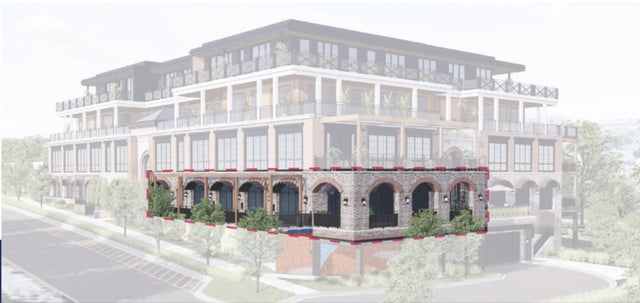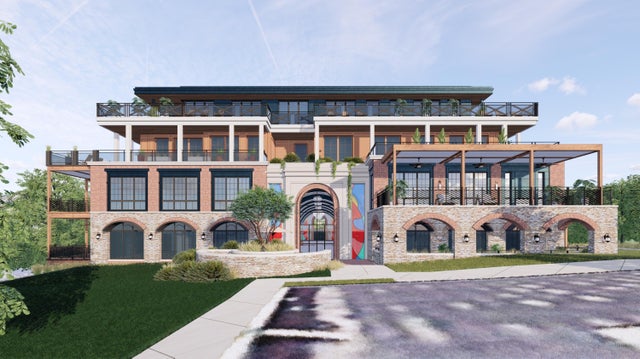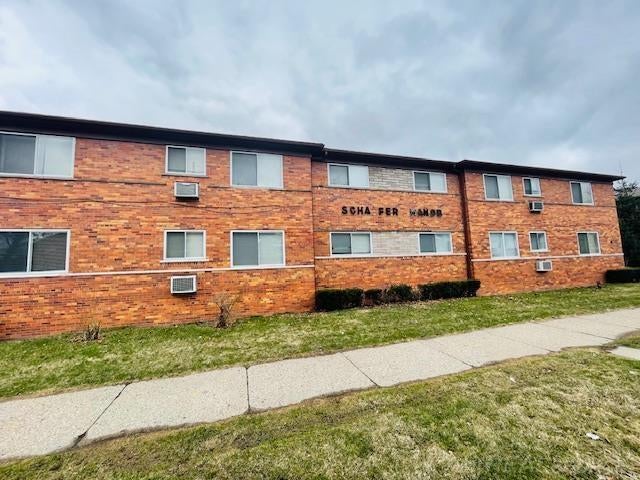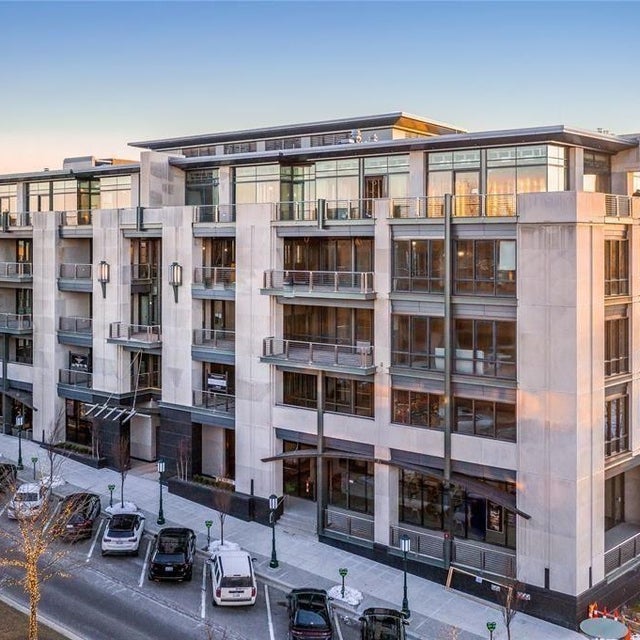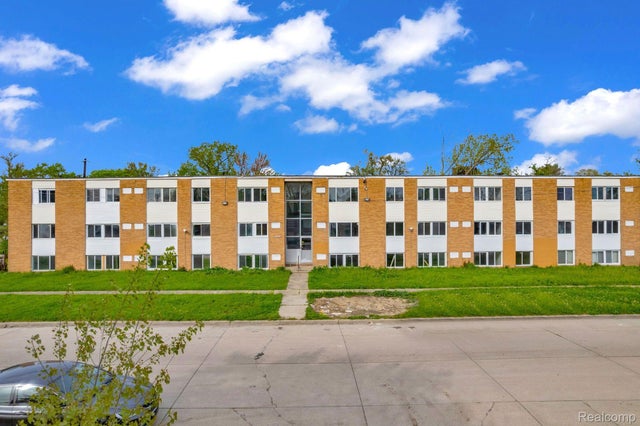Ever noticed something strange in a Detroit high-rise elevator? Many Detroit buildings skip the 13th floor – at least, you’ll never see a button for it. Step into the Fisher Building’s art deco elevators or the sleek lifts at One Campus Martius, and you’ll watch the numbers jump from 12 to 14. The 13th floor is there physically, of course, but it goes unmentioned, wiped away by a century-old superstition in architecture. This odd omission isn’t just a local quirk; it’s part of a longstanding fear of the number 13 – a fear so common it even has a name: triskaidekaphobia, the fear of “13”. Why do builders and landlords avoid naming a 13th floor, and why does Detroit’s skyline quietly comply with this taboo? Let’s explore the roots of this superstition, how it shaped Metro Detroit’s real estate, and what it means for the buildings we work and play in every day.
Curious about how Detroit’s skyline is evolving? Check out our guide to the major developments reshaping the Motor City in 2025.
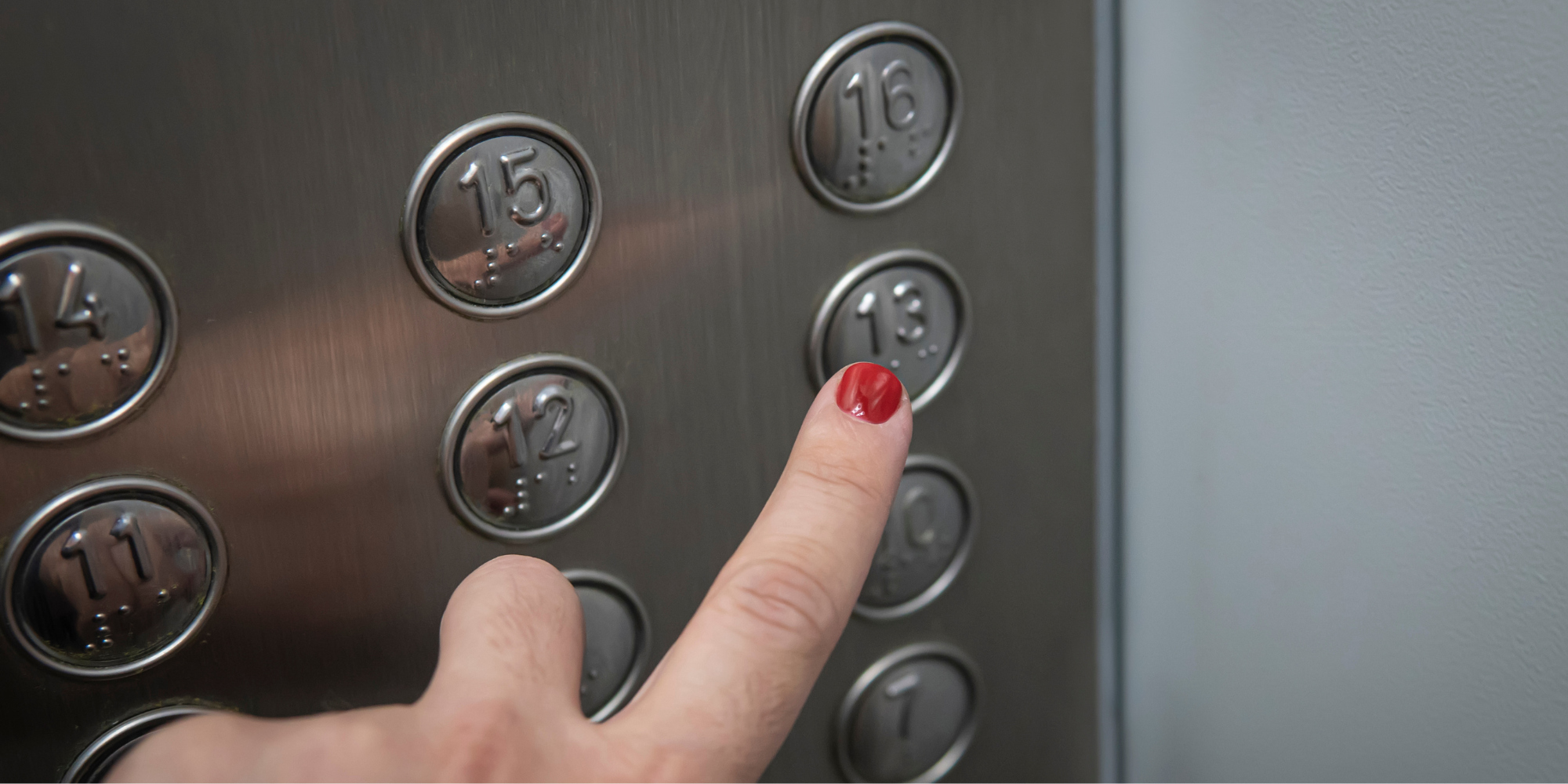
A Century-Old Superstition Surrounding 13
The aversion to the number 13 goes back ages, woven from myth, religion, and a dash of folklore. No one knows exactly how it started, but several legends offer clues as to why 13 is considered unlucky:
- The Last Supper: In Christian lore, Judas Iscariot – the disciple who betrayed Jesus – is often said to have been the 13th guest at the Last Supper. His presence supposedly doomed the gathering. Ever since, the idea of a “13th guest” at a table has been associated with bad luck (enough that society hostesses in 19th-century France reportedly hired professional 14th guests to avoid dining with 13 at a table!).
- Norse Mythology: An old Viking legend tells of a divine dinner party in Valhalla where the trickster god Loki showed up uninvited as the 13th guest. Loki’s mischief led to the death of a beloved god, casting a pall over the number 13 for the gods – and, by extension, for us mortals.
- Tarot and the Occult: In a tarot deck, the 13th card is “Death,” often illustrated by a skeleton rider astride a pale horse. While tarot readers will note this card can symbolize transformation more than literal doom, its number has never shed the ominous reputation.
- Apollo 13: Even modern history feeds the superstition. NASA’s Apollo 13 moon mission in 1970 famously suffered a dramatic in-flight explosion. The crew beat the odds by returning safely, but the incident – immortalized in the film Apollo 13 – cemented the number’s jinxed status for a generation.
- Friday the 13th: Beyond buildings, an entire day — Friday the 13th — carries the cultural weight of bad luck. This fear is so prevalent it spawned a horror movie franchise and prompts some people to avoid travel or important decisions on those dates. (Fittingly, one of Detroit’s recent downtown elevator upgrades was completed on a Friday the 13th, much to the amusement of the building’s staff.)
Triskaidekaphobia may sound arcane, but its effects are real. Surveys show many people still harbor unease about the number. In one Gallup poll, 13% of Americans admitted they would feel nervous staying on a hotel floor numbered 13 – an eerily appropriate percentage. With superstition this widespread, it’s little wonder that it found its way into architecture. Which brings us to the missing 13th floors in our buildings.
Detroit’s Real Estate Superstition: Missing 13th Floors
In Metro Detroit, triskaidekaphobia in architecture is alive and well. Building owners and developers often omit the 13th floor when numbering elevators and offices – a practice both practical and superstitious. Take a ride in some of Detroit’s most iconic buildings and you’ll find the mystery of the missing 13th floor in action.
An elevator panel skipping from 12 to 14 (with a “12A” thrown in) – a common sight in high-rises shaped by triskaidekaphobia. Many Detroit elevators simply won’t label a 13th floor, reflecting a long-held belief that 13 brings bad luck.
Downtown Detroit is full of examples. The golden-towered Fisher Building in New Center – one of Detroit’s most famous skyscrapers – has no labeled 13th floor at all. Office tenants move straight from floor 12 to floor 14 as if 13 doesn’t exist. Over in Campus Martius, Dan Gilbert’s modern headquarters at One Campus Martius follows the same pattern, skipping from 12 to 14 on the elevator readout. And the historic Chase Tower downtown (the one with the blue checkerboard facade) also omits a 13th-floor button, despite being tall enough to have one. In each case, it’s not that these buildings lack an actual 13th level – they simply choose not to call it “13.” It’s a real-estate custom passed down through time, born out of the notion that tenants might refuse to occupy an “unlucky” floor.
Detroit’s suburbs have joined in the tradition too. In Dearborn, the twin high-rises of Parklane Towers (nicknamed the “salt-and-pepper shakers” by locals) each climb 15 stories high – yet if you scan the elevator directory, you won’t find a 13. They jump right over it, a design decision dating back to the towers’ construction in the 1970s. Likewise, in Southfield’s high-rise corridor, buildings like the Epicenter (Epicentre) Office Center on Nine Mile Road quietly sidestep the number 13. “Too much of a hassle,” shrugged owner Tarik Dinha, when asked why his building’s elevators still lack a 13th floor label – it was built that way, and there’s no appetite to change it now. Farther north, Troy’s 13-story Columbia Center office complex (built in 2000) also forgoes a 13th floor in its elevator numbering, continuing the superstition into the 21st century.
Why do these modern buildings cling to an old superstition? Partly, it’s about pleasing the customer. Developers know some folks simply won’t rent an apartment on the 13th floor or book a hotel room on “13.” In real estate terms, thirteen can be a hard sell. In fact, one analysis found that condos on the 13th floor tend to sell 18% less often than those on other floors – buyers shy away before ever stepping foot in them. If you’re a landlord, skipping 13 might just make economic sense to avoid vacant units. It’s telling that 85–90% of high-rise elevators installed by Otis (the leading elevator company) do not have a 13th-floor button at all. The vast majority of skyscrapers and hotels from New York to Nashville have simply deleted the number. As one local commercial real estate expert put it, the practice is “part superstition and part building economics – and not necessarily equal parts”. In other words, some building owners truly fear bad luck, while others fear losing a superstitious tenant more.
Want the latest on Michigan Central’s comeback? Check out our update on the NoMad Hotel and new dining coming soon.
.png)
Superstition by the Numbers
To put Detroit’s 13th-floor habit in perspective, here are a few stats and facts on triskaidekaphobia in real estate:
- 80–90% – Estimated share of skyscraper elevators that skip a numbered 13th floor (according to Otis Elevator Co.).
- 13% – Proportion of Americans who feel uneasy staying on a 13th floor in a hotel, per a 2007 Gallup poll (fitting, isn’t it?).
- 18% – How much less frequently 13th-floor apartments sell compared to other units, one study found. Buyers and renters often balk, reducing demand.
- 5% – Approximate share of New York City condo buildings that actually label a 13th floor; the other 95% avoid it. Even in the nation’s biggest real estate market, the superstition holds sway.
- 8 buildings (at least) – Number of major buildings in Metro Detroit known to omit the 13th floor label, according to a Crain’s Detroit Business survey – including those mentioned above and more. (And that’s a conservative count; plenty of smaller buildings quietly do it too.)
For Detroiters, these statistics might add up to one simple truth: skipping the 13th floor is normal. Generations of office workers have commuted to “14th” floor suites that are technically 13th floors in disguise, and hotel guests routinely stay on “14” with little fanfare. If there’s any discomfort about it, it’s usually handled behind the scenes in the building’s planning. As the property manager of one Metro Detroit high-rise joked, “We don’t have a 13th floor – our 12B does all the heavy lifting instead.” In many buildings, that’s exactly the trick: some will label the 13th floor as “12A” or “M” (for Mezzanine/Mechanical) so that no tenant ever officially occupies “Floor 13”. It’s superstition by way of clever numbering.
Folklore, Fear, or Function? Why 13 Still Gets Skipped
It’s worth asking: in 2025, shouldn’t we be over this? Detroit’s real estate community is savvy and forward-looking, yet the 13th-floor superstition persists. Part of the reason is simply legacy. Many older buildings were designed in eras when the fear of 13 was at its height, and those floors have been un-numbered for decades. Changing it now isn’t trivial – it would mean renumbering directories, reprogramming elevators, and even adjusting leases. Building owners often decide it’s not worth the fuss. As Southfield’s Epicenter building owner noted, revising all that just to add a 13th floor label would be “too much of a hassle”. In essence, if it ain’t broke (and nobody’s clamoring for a 13), why fix it?
There’s also a psychological factor: no one wants to tempt fate for no good reason. Even if you don’t personally fear the number 13, a building owner has to consider that some of your neighbors or clients might. If leaving out one little number keeps even a few superstitious customers happier, it can seem like the prudent choice. This is especially true in hotels and residential towers. One veteran Detroit real estate broker explained that in luxury apartment buildings, units on the 14th floor (really the 13th floor in structure) typically rent or sell just fine – as long as they aren’t called the 13th floor. “People don’t mind working on the 13th floor, but sleeping there is another story,” he noted, only half joking. Data backs this up: superstition tends to weigh more on where we live and sleep than where we work.
However, not everyone is on board with bending to an old superstition. Some Detroit developers and hoteliers today choose to label every floor, plain and simple. After all, 14 might hide the truth, but it doesn’t change the physics – the 14th floor is the 13th floor in drag, and plenty of folks realize it. (As one tongue-in-cheek commenter quipped, “People on the 14th floor know what floor they’re really on” – missing number or not.) In fact, a few famous skyscrapers have proudly kept their 13th floors. New York’s Empire State Building has one, as do landmarks like the Flatiron Building and the Waldorf Astoria hotel. Even here in Michigan, the old J.L. Hudson’s department store in downtown Detroit had a 13th-floor dining room that became legendary for its Maurice salads and Canadian cheese soup. Generations of Detroit shoppers dined happily on the 13th floor of Hudson’s, apparently untroubled by the number above the door. So the superstition isn’t universal – it’s just common.
Safety Concerns and Changing Attitudes
Interestingly, the practice of skipping floor numbers has raised safety and practicality concerns. Critics point out that unconventional numbering (like jumping from 12 to 14) could confuse first responders in an emergency. Firefighters rushing to evacuate a burning high-rise don’t need the extra mental gymnastics of figuring out which labeled floor is actually the 13th. This concern led the city of Vancouver to ban the omission of floor 13 (and other numbers) in new buildings starting in 2015. In Vancouver, and in a few other forward-thinking cities, every floor must be labeled in logical order – bad luck be damned – to make life easier for paramedics and firefighters. So far, no such regulation exists in Detroit or elsewhere in the U.S., but it does spark a debate: at what point do we let rationality override superstition in design? As technology modernizes our elevators and we retrofit old buildings for the future, these conversations are happening in quiet corners of the facilities management world. Don’t be surprised if someday a bold Detroit developer breaks the curse and proudly installs a “13” button – marketing it as a hip, rational twist in a market full of skipped numbers.
For now, though, the status quo stands. Elevator modernization projects across Metro Detroit have largely left the floor numbers as-is. When older buildings like the Fisher or Penobscot Building upgrade their lift systems, they typically keep the same numbering sequence that tenants are used to. It’s a kind of if-you-don’t-mention-it, we-won’t-either agreement with fate. Besides, as long as tenants keep coming and no one is raising a stink about the missing floor, building owners have little incentive to buck tradition. Superstition may be old-fashioned, but it’s a comfortably settled part of the urban experience for many – as ingrained as carrying an umbrella when there’s a cloud (who wants to risk it?).
.png)
The 13th Floor in Pop Culture and Conspiracy Theories
Naturally, a quirk as odd as a “missing” floor has inspired plenty of storytelling. If folklore abhors a vacuum, then that unmarked 13th level in a building is the perfect blank canvas for our imaginations. Pop culture is rife with references to the hidden 13th floor as a site of mystery, horror, or intrigue. TV writers, novelists, and filmmakers have had a field day asking: What if something secret is happening on the 13th floor that “doesn’t exist”?
Conspiracy theories abound. Some whisper that the 13th floor in certain government buildings is where shadowy agencies conduct top-secret experiments – safely out of sight from the public on a floor that officially isn’t there. In other tales, the missing 13th floor houses ghosts or supernatural activity, conveniently explaining why it’s kept off-limits. These ideas have leapt from folklore into media. Classic TV shows like The X-Files played on the notion, portraying hidden labs and paranormal events unfolding on nonexistent floors. Video games (like installments of Tomb Raider) have stashed macabre plot points on a spooky 13th floor. The premise is so popular that it even became the central twist of an episode of Nickelodeon’s Are You Afraid of the Dark? – where curious kids discover a vacant 13th floor that turns out to be a portal for aliens (imagine finding out your apartment’s phantom floor is an extraterrestrial welcome center!). And of course, who could forget the many horror movies that love putting ghosts in the “empty” 13th room or floor of a hotel? The 13th floor has become a pop-culture icon of the unseen and occult, a metaphor for the things we collectively fear or suppress.
These fantastical stories might make us chuckle, but they highlight an interesting point: the power of superstition in the modern age. Even as we engineer steel skyscrapers and develop cutting-edge elevator tech, a little piece of ancient fear sneaks in and captures our imagination. The missing 13th floor stands as a reminder that we’re not entirely ruled by logic – our buildings have a bit of personality, shaped by human hopes and fears. In Metro Detroit, that personality comes with winks to folklore, from gargoyles on the Guardian Building warding off evil to the absence of 13 in our elevators. It’s part of what makes exploring our city’s architecture fun.
Love number-based traditions in Detroit? Check out our 2025 guide to 313 Day in Metro Detroit.
Next Time You Ride an Elevator in Detroit, Look Up
Superstition or not, the missing 13th floor is a slice of living history in Detroit and beyond. It’s one of those little details – like a hidden Mickey in a Disney park, or an Easter egg in a video game – that’s there if you know to look for it. So next time you step into an elevator in one of Metro Detroit’s high-rises, take a second to look at the buttons. Are you in a building that labels its 13th floor, or do the numbers skip from 12 to 14? Point it out to your kids or your friends; you’re now the savvy local expert who knows why that number is missing. It might spark a fun conversation during your ride up to the office or down to the parking garage.
And if you happen to find yourself on a “14th” floor, give a knowing wink – you’re in on the little secret that it’s really floor 13 in disguise. Whether you’re a skeptical professional who rolls your eyes at old superstitions, or a parent playfully spooking your teens with tales of the haunted 13th floor, this quirky aspect of Detroit’s real estate superstition is something we all share. Our city’s skyline, from downtown towers to suburban office centers, bears the subtle mark of triskaidekaphobia etched in its blueprints. It’s a blend of old-world fear and modern practicality that has stood the test of time.
So keep an eye out on your next elevator ride. Notice that missing button. Maybe even imagine what could be behind those unmarked doors – a secret lounge? A ghostly tenant? Or just a lot of HVAC equipment quietly humming on the “mechanical” floor. Whatever you fancy, remember that even the most state-of-the-art building can have a superstitious soul. In a city that’s always reinventing itself yet cherishes its history, the tale of the 13th floor is just another charming chapter in the story of Detroit’s buildings. And as you exit onto your floor (12A or 14, as it may be), take pride that you know the answer to “what happened to the 13th floor?” – a little bit of lore riding along with you in the elevator, every step of the way.
DON'T KEEP US A SECRET - SHARE WITH A FRIEND OR ON SOCIAL MEDIA!
THINKING OF MOVING TO Metro Detroit, OR LOOKING TO RELOCATE IN THE AREA? VIEW A LIST OF CURRENT HOMES FOR SALE BELOW.
Metro Detroit Homes for Sale
The Perna Team and Michael Perna are the best real estate agents in Metro Detroit and Ann Arbor. The Perna Team and Michael Perna have been hired as a real estate agent by hundreds of home owners to sell their homes in Metro Detroit and Ann Arbor.





